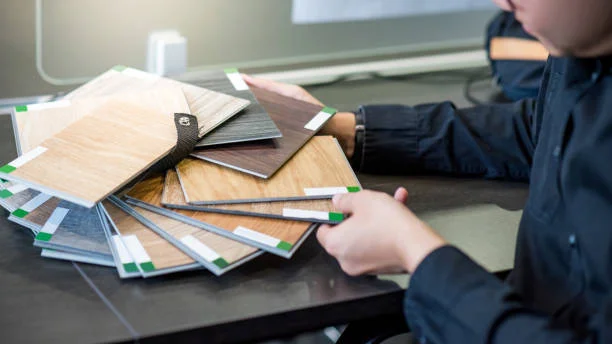When designing or renovating your home, few choices make as strong a visual and functional impact as flooring. It’s the foundation of every room, literally and aesthetically, influencing everything from comfort and durability to style and mood. Whether you’re building from scratch or reimagining your interiors, selecting the right flooring material can set the tone for your entire space.
Experienced custom home builders Ontario homeowners trust know that flooring is more than just a design decision. It’s an investment in how you live, move, and feel within your home. The right surface can enhance warmth in winter, withstand busy family life, and elevate your home’s resale value, while the wrong one can lead to regrets, maintenance headaches, and mismatched aesthetics.
So, how do you choose? Let’s explore the most popular flooring options available today, what they bring to your space, and how to make sure your choice fits your home’s needs, personality, and long-term goals.
1. Hardwood Flooring: Timeless Warmth and Natural Elegance
Hardwood has long been a homeowner favorite, and for good reason. It’s durable, versatile, and adds instant character to any room. Beyond its rich, organic appeal, hardwood floors offer a sense of permanence that few other materials can match.
Why Homeowners Love Hardwood
Hardwood flooring brings warmth and authenticity. Every plank tells a story, the unique grain patterns, knots, and tones reflect nature’s imperfections beautifully. Whether you prefer the rustic charm of oak, the deep richness of walnut, or the light modernity of maple, there’s a species and finish to suit every taste.
Its ability to be refinished also adds to its longevity. Unlike synthetic options, solid wood can be sanded and re-stained multiple times, meaning a well-maintained hardwood floor can last generations.
Don’t miss how this related post ties directly into what you just explored.
Best Spaces for Hardwood
Hardwood is ideal for living rooms, bedrooms, hallways, and dining areas, places where warmth and comfort are priorities. It’s less suitable for bathrooms or basements, where moisture can cause warping or swelling.
Things to Consider
- Maintenance: Hardwood needs regular sweeping and occasional refinishing to maintain its glow.
- Cost: It’s one of the more expensive options upfront, but its durability offers excellent long-term value.
- Temperature Sensitivity: Wood expands and contracts with humidity changes, making climate control important.
If you’re after timeless beauty and durability, hardwood remains the gold standard of flooring options, elegant yet enduring.
2. Laminate and Vinyl: Modern Alternatives with High Performance
Not everyone’s lifestyle (or budget) suits natural hardwood, and that’s where laminate and luxury vinyl come in. Once considered lower-end options, today’s versions have evolved into high-performance materials that mimic the look and feel of wood or stone without the same cost or maintenance demands.
Laminate: Practical and Stylish
Laminate flooring features a photographic layer under a protective coating, giving it the realistic look of wood or tile. It’s durable, scratch-resistant, and ideal for high-traffic areas or homes with pets.
Modern laminates also come in wide planks, textured finishes, and varying tones that replicate natural materials surprisingly well. They offer a stylish aesthetic at a fraction of the price, a great option for families or rental properties.
Vinyl: The Quiet Performer
Luxury vinyl plank (LVP) or tile (LVT) has become increasingly popular for its water resistance, comfort underfoot, and variety of designs. Many homeowners use vinyl in kitchens, mudrooms, or basements where durability and moisture protection are key.
Why These Options Work
- Low Maintenance: Simple cleaning routines and no need for refinishing.
- Budget-Friendly: Both laminate and vinyl are less expensive than hardwood or natural stone.
- Versatile Installation: They can be installed over most existing floors, making renovation easier.
Things to Consider
While both materials are resilient, they can’t be refinished like hardwood. Once damaged, individual planks may need replacement. Still, their overall affordability, realism, and practicality make them smart modern choices.
For homeowners who want durability and design without constant upkeep, laminate and vinyl deliver a balanced solution.
3. Tile and Stone: The Beauty of Enduring Strength
Few materials match the durability and timeless sophistication of tile and natural stone. From sleek porcelain to rugged slate, these surfaces have graced homes for centuries, and continue to define modern luxury.
Ceramic and Porcelain Tile
Ceramic tiles are made from clay and fired at high temperatures, while porcelain tiles are denser and more moisture-resistant. Both come in countless colors, sizes, and patterns, making them suitable for nearly any design aesthetic.
In kitchens, bathrooms, and entryways, tile flooring offers easy cleaning and resistance to spills or scratches. Porcelain, especially, is known for its strength and low absorption rate, making it ideal for humid or wet environments.
Natural Stone: Authentic Luxury
Stone flooring, such as marble, granite, travertine, or slate, offers an undeniable wow factor. Each piece is unique, giving your floors a natural, organic quality that can’t be replicated.
Stone also provides excellent durability, with some varieties lasting a lifetime when properly sealed. Over time, its surface can develop a beautiful patina, adding to its character.
Considerations Before You Install
- Cost: Stone and high-quality tiles can be expensive, both in material and installation.
- Cold Underfoot: Tile and stone can feel cool, though underfloor heating easily solves this.
- Maintenance: Regular sealing (especially for stone) is essential to prevent staining or moisture damage.
If you want a surface that blends durability with sophistication, tile and stone remain unmatched. They’re practical yet stylish, especially in homes where design is a priority.
4. Carpet: Comfort, Warmth, and Quiet
While modern homes often favor hard surfaces, carpet remains a classic choice for certain rooms — especially those designed for comfort and relaxation.
Why Carpet Still Matters
Carpet softens a space in every sense, visually, acoustically, and physically. It dampens sound, provides insulation, and feels inviting underfoot. Bedrooms, family rooms, and basements all benefit from the comfort that carpet brings.
It’s also one of the most customizable flooring types. With thousands of colors, patterns, and textures, it can be used to define mood, plush neutrals for calm sophistication, bold tones for warmth and energy.
Modern Carpet Technology
Today’s carpets are far more advanced than those of decades past. Many are stain-resistant, easy to clean, and made from recycled or eco-friendly materials. Carpet tiles even allow for easy replacement of damaged sections, extending longevity.
Where It Shines — and Where It Doesn’t
Carpet works best in areas where warmth and softness matter most. However, it’s not suitable for moisture-prone rooms like kitchens, bathrooms, or mudrooms.
Things to Consider
- Maintenance: Requires regular vacuuming and periodic deep cleaning.
- Allergies: While modern options are hypoallergenic, hard floors are still better for dust-sensitive individuals.
- Longevity: Quality carpets last 10–15 years, depending on traffic and maintenance.
For homeowners seeking coziness and acoustic comfort, carpet offers unmatched warmth — a timeless reminder that home should always feel welcoming.
5. Emerging Trends: Sustainable and Hybrid Flooring Options
Home design trends evolve with technology, and flooring is no exception. The newest generation of materials prioritizes sustainability, health, and versatility, ideal for homeowners looking to align style with environmental values.
Engineered Wood: Eco-Friendly Strength
Engineered hardwood combines a real wood surface with a stable core made from multiple layers of plywood or fiberboard. It offers the beauty of solid wood with added resistance to moisture and temperature changes.
It’s also more sustainable, as it uses less solid lumber per plank. Perfect for those who love natural aesthetics but live in regions with humidity fluctuations.
Cork: Soft, Silent, and Sustainable
Cork flooring, made from the bark of cork oak trees, is renewable and biodegradable. It’s naturally anti-microbial, hypoallergenic, and comfortable underfoot. Its unique cellular structure absorbs sound and provides insulation, making it a favorite for bedrooms or offices.
Bamboo: Fast-Growing and Strong
Bamboo has surged in popularity as a green alternative to hardwood. Technically a grass, it’s incredibly durable and regenerates quickly after harvest. With finishes that range from light natural tones to deep caramel hues, bamboo blends sustainability with modern design appeal.
Hybrid Flooring: The Best of Both Worlds
Hybrid flooring combines the durability of vinyl with the look of wood and the comfort of laminate. Waterproof, scratch-resistant, and easy to install, it’s quickly becoming a go-to choice for families seeking all-around performance.
These materials show where flooring design is heading, toward solutions that are beautiful, practical, and environmentally conscious.
Final Thoughts: Finding the Right Fit for Your Home
Choosing flooring is about balance, between form and function, durability and comfort, cost and character. The right choice depends on how you live, not just how you want your home to look.
Ask yourself:
- Do you have pets or kids that demand easy-clean surfaces?
- Do you value warmth underfoot more than sleek design?
- Will you be using radiant floor heating or moisture barriers?
For some, hardwood’s timeless elegance wins every time. For others, vinyl’s resilience or tile’s practicality fits best. The key is understanding your lifestyle and environment, then matching materials accordingly.
Working with experienced custom home builders Ontario homeowners rely on ensures your flooring choice aligns with your home’s architecture, daily use, and long-term vision. Experts can help you evaluate not only aesthetics but also structural considerations like subfloor compatibility, soundproofing, and energy efficiency.
Because in the end, flooring isn’t just what you walk on, it’s what grounds your entire home design. It frames your style, defines your comfort, and reflects how you want your space to feel for years to come.
So take your time, explore textures, and choose with intention. The right floor doesn’t just complete your home, it becomes part of its story.
Don’t stop at one — explore more articles at Management Works Media worth every minute.






